20 Fair Trade Coffee Facts To Think About in 2024
While awareness about fair trade coffee continues to rise, it’s important that we understand the huge impact of this movement.
But what is fair trade coffee and does it matter at all?
Let me enlighten you about the concept of fair trade coffee with these 20 statistical facts showing its effects on the farmers and communities that make a living out of cultivating coffee.
What is Fairtrade Coffee?
Fair trade coffee is a certification that lets you know that farmers who grew the coffee receive a fair price for their work, crops, while also benefiting their communities and the environment.
Participating producers of the fair trade system must adhere to certain guidelines to raise their market price and provide fairer wages for the farmers.
On top of the additional payment given to the farmers, a premium is also added which will then be used for the improvement of the farmers’ communities through healthcare, education, and the protection of the environment.
So to summarize the essence of Fairtrade International, they address the following issues in the trade of coffee and its other products:
- Child labor
- Forced labor
- Due diligence among businesses
- Climate change
- Protection of the environment
- Workers’ rights, working conditions, wages
- Gender inequality
- United Nations’ Sustainable Development Goals
And aside from coffee, other industries with Fairtrade certifications include:
- Bananas
- Cocoa
- Flowers
- Sugar
- Tea
To learn more about coffee trade systems, read my guide to direct trade coffee and certifications such as bird-friendly shade grown coffee and Rainforest Alliance.
Fair Trade vs Fairtrade: What’s the Difference?
The two-word term “fair trade” generally refers to the ethical trade of coffee while “Fairtrade” is a global network that provides an international fair trade system.
The challenge with fair trade is that it’s an unprotected term, which companies can use on their products without enough proof.
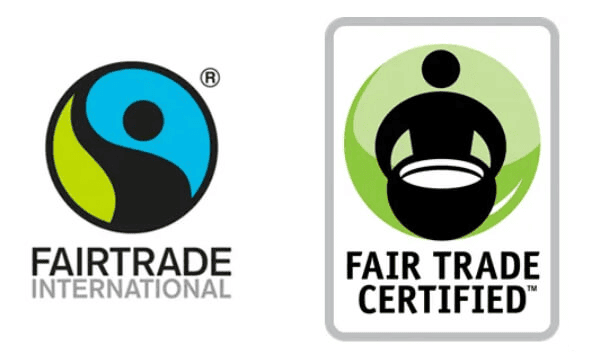
To ensure that your money really goes to the benefit of coffee farmers, you need to make sure that the products you buy are labeled Fairtrade or come with certifications from members of the World Fair Trade Organization.
20 Facts About Why Fair Trade Coffee Is Important
To give you a better grasp of fair trade’s role in coffee production around the world, here are some interesting facts to think about.
1. Coffee farmers usually earn less than a dollar per pound of coffee.
One of the main threats to the sustainability of the coffee market is its price, with only a small sum going to the farmers. The average coffee farmer usually earns less than a dollar per pound of coffee beans they harvest (Source: www.fairtrade.net), which is still far from a living income.
The low prices fetch the farmers only 7% to 10% of the supermarket price of their coffee (Source: nochildforsale.ca). To make enough money to survive, parents are forced to put their children as young as 6 years old to work at some coffee plantations.
2. Brazil is the only country where the coffee producer’s income meets the living income estimates.
Of the ten coffee-producing countries that represent 89% of coffee exports and 62% of producers worldwide, only two countries, Brazil and Vietnam, have enough average coffee income to place farmers above the poverty line.
Only Brazilian workers have income above the $6,051 annual living income estimate, but only barely at $6,128 per year (Source: scholarship.law.columbia.edu).
3. Less than 1% of Brazil’s coffee is Fairtrade.
While Brazil’s coffee income meets the living income, their participation in producing fair trade coffee is quite low.
As the largest coffee grower in the world, the country produced 39.35 million bags of coffee in 2021. However, only 240,000 bags were fairtrade certified. (Source: valorinternational.globo.com).
4. Fairtrade coffee pays farmers $1.80 per pound in 2023.
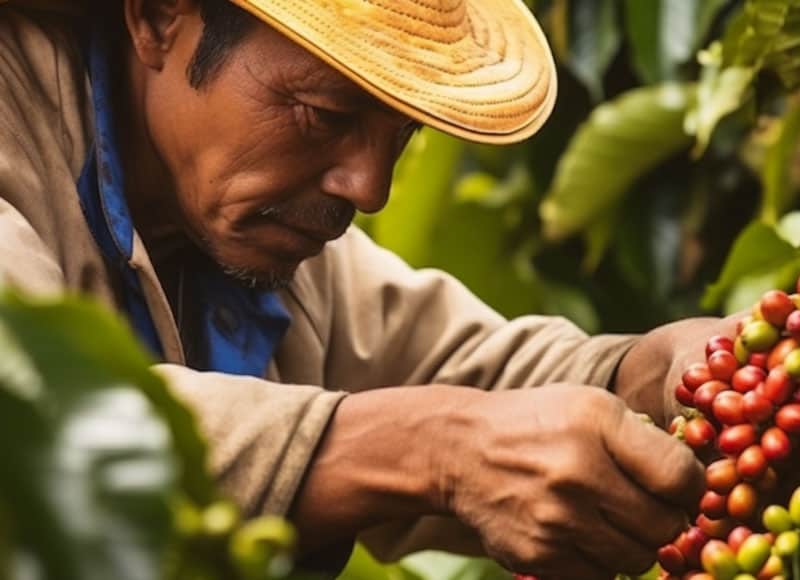
To help lift farmers above the poverty line, the Fairtrade minimum price has been raised to $1.80 per pound of Arabica, $1.20 for Robusta, and a differential of 40 cents for organic coffee (Source: files.fairtrade.net).
These coffee prices reflect the increase in August 2023. Before that, Arabicas were sold at $1.40, Robustas at $1.01, and Organic at $1.70.
5. 483 million euros of Fairtrade Premium went to the benefit of farmers from 2015 to 2022.
Apart from the higher income, Fairtrade system farmers also receive a Fairtrade Premium which is additional money paid out to farmer cooperatives who can then decide how to best use it for the development of their farms and communities.
According to Fairtrade International’s report in 2022, the cooperatives received a total of 483 million euros (about $518 million) of Fairtrade Premium since 2015.
6. 30% of Fairtrade coffee sold in the US came from Peru.
Data from 2016 showed that the majority of Fairtrade coffee in the US, which is 30%, came from Peru.
This is followed by Indonesia at 11.7% and Colombia at 10.5% (Source: nationalcoffee.blog).
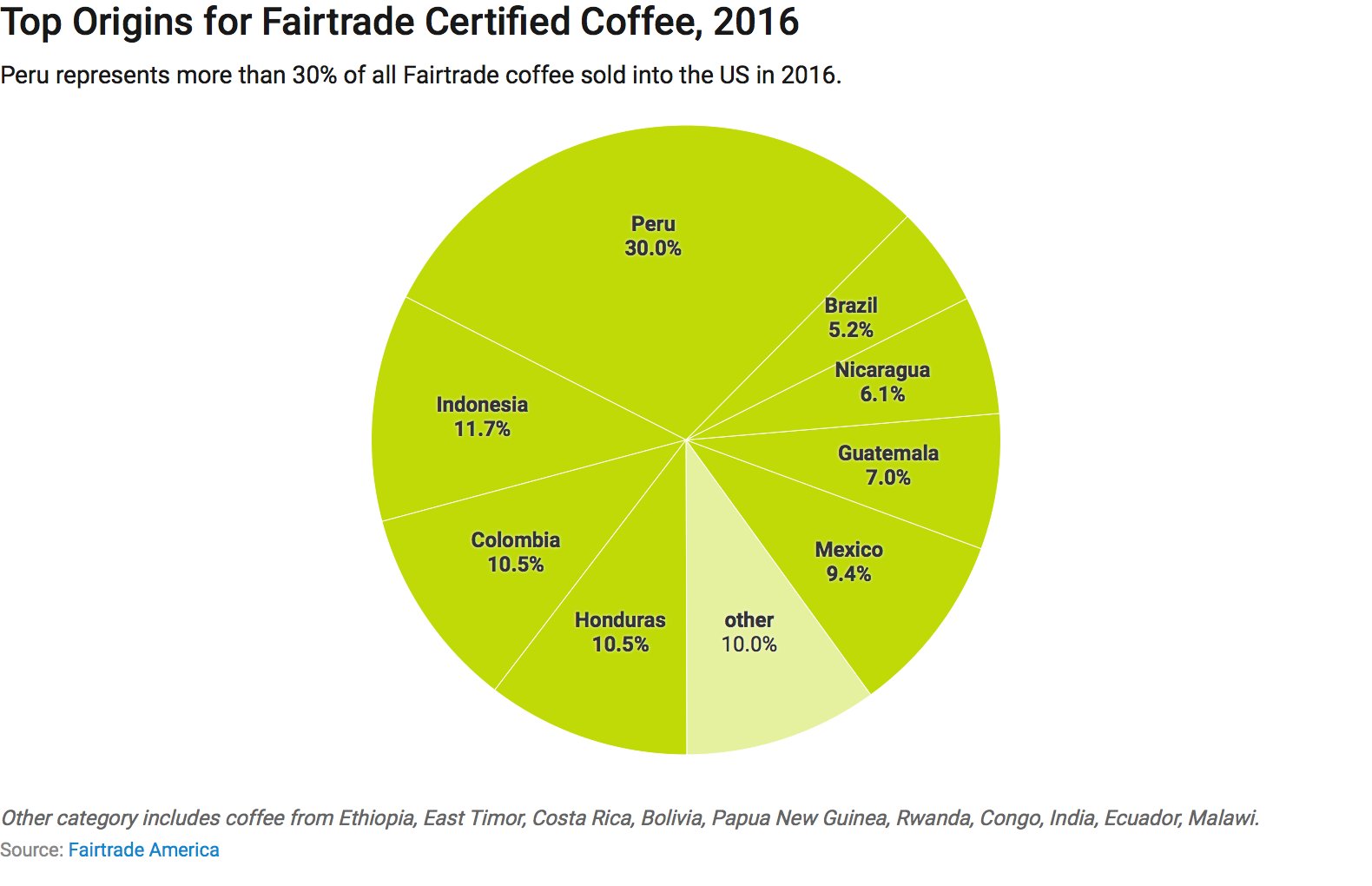
7. Bolivia has the largest portion of Fairtrade coffee at 68% exported in 2016.
Comparing the countries exporting to the US coffee supply chain, Bolivia had the most portion of Fairtrade coffee from their total exports in 2016. Bolivia’s 68% is then followed by Peru’s 18% and Ethiopia’s 11% (Source: datawrapper.dwcdn.net/6hKJi/2/).
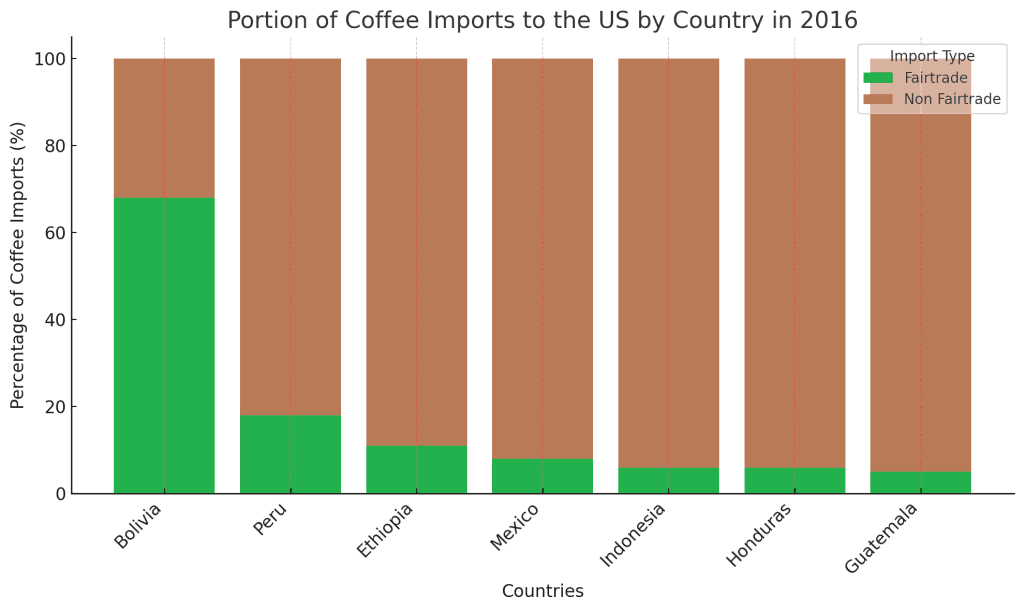
8. 58% of Fairtrade Premium was used for the UN’s Zero Hunger Sustainable Development Goal (SDG).
In relation to the UN Sustainable Development Goals (SDGs), 58% of the total Fairtrade Premium was spent on SDG 2 Zero Hunger, followed by SDG 1 No Poverty at 21%, and SDG 8 Decent Work and Economic Growth at 6% (Source: fairtrade.net/impact/fairtrade-premium-spending-by-sdg).

9. Fairtrade has more than 800,000 farmers and 656 cooperatives.
Based on Fairtrade International’s 2022 report, 838,116 farmers from 656 Fairtrade-certified coffee producers across four continents are benefiting from this system.
But if you think about it, over 800,000 farmers are not many, considering that an estimated 125 million people make a living out of coffee.
It makes for 0.6% of the workforce so far…
10. 923,000 metric tonnes of Fairtrade coffee were produced in 2021.
An estimate of over 10 million tonnes of coffee beans are produced in a year. In 2021, a total of 923,000 metric tonnes produced were Fairtrade coffee, which is 9.23% of the global coffee production (Source: riskmap.fairtrade.net/commodities/coffee).
11. The United Kingdom is the biggest consumer of Fairtrade products, with 2 billion euros worth of sales in 2017.
When it comes to the world’s biggest consumers of Fairtrade products, the United Kingdom took the lead in 2017 with 2 billion euros worth of sales (even though it is just the 10th in overall coffee consumption).
The UK is then followed by Germany at 1.33 billion euros and France at 561 million euros (statista.com/statistics/859892/).
Meanwhile, of all the coffee sold in the UK, 25% of it is Fairtrade-certified coffee (Source: cbi.eu/market-information/coffee/uk/market-potential).
12. Coffee is the 4th most sold fair trade product in the world.
In the ranking of fair trade products based on sales, 2018 figures show that coffee is placed fourth with 207,158 metric tons sold.
Leading the list are flowers and plants (825,197 in thousand units), bananas (686,603 metric tons), and cocoa beans (260,628 metric tons), while cane sugar, cotton, and tea go after coffee beans respectively (Source: statista.com/chart/21654/).
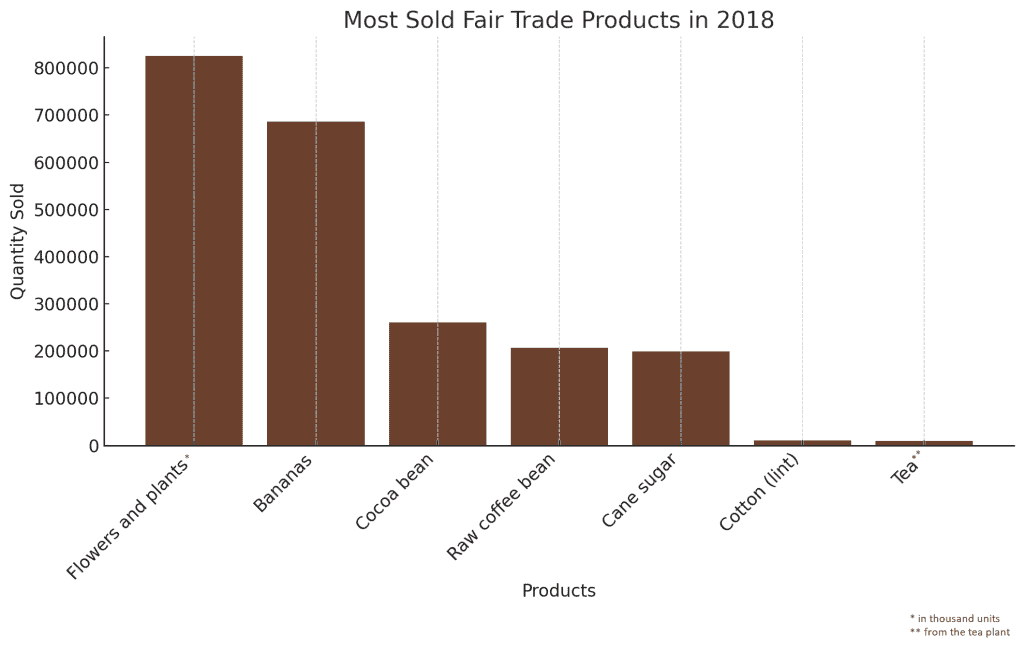
13. 70% of coffee production labor is provided by women.
About 20% to 30% of coffee farms are operated by women while up to 70% of labor is provided by women depending on the region.
But when you look at empirical data, women have systemically lower access to resources than men have (Source: ico.org/documents/cy2017-18/icc-122-11e-gender-equality.pdf).
14. A total of 1.4 billion retail sales were made for Fairtrade products.
The 2020 retail sales of Fairtrade products amounted to $1.4 billion, with 73% of millennials saying that they would pay more for sustainable products (Source: fairtradeamerica.org/why-fairtrade/global-impact/).
15. Fairtrade coffee sold 5 times faster than conventional coffee.
According to Fairtrade America, Fairtrade coffee flies off the shelves five times faster than traditional coffee. That speaks volumes when it comes to the demand for sustainable coffee.
16. 57% of US consumers trust the Fairtrade mark.
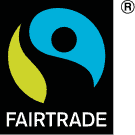
Consumer trends on Fairtrade products show that 57% of consumers in the US trust the Fairtrade mark.
In 2019, there was a 46% increase in Fairtrade awareness among US consumers.
(Source: fairtradeamerica.org/for-partners/consumer-trends/).
17. Consumers are willing to pay $1.36 more for eco-friendly coffee.
A 2021 study shows that consumers are willing to pay $1.36 more for a pound of coffee that is sourced in an eco-friendly way, especially those labeled “Organic.”
It was also noted that consumers’ willingness to pay for fair trade, Organic, and COOL is positive and significant (Source: sca.coffee).
18. There’s a total of 653,042 carbon emissions reduced through Fairtrade’s Carbon Credits.
Fairtrade and Gold Standard partnered up in 2015 to launch Carbon Credits, which companies can purchase to make up for their carbon emissions while making an effort to lower their own emissions and meet Fairtrade’s standards. These companies can then tag their products as “climate-friendly.”
The money from Carbon Credits goes to projects that further lower carbon emissions in the coffee farming communities and to Fairtrade Premium. To date, there’s a total of 653,042 carbon emissions reduced through Carbon Credits, which also translates to 7.2 million euros ($7.7 million) generated in sales (Source: files.fairtrade.net/FairtradeCarbon-Credits.pdf).
19. 66,000 households have benefited from Carbon Credits.
Fairtrade and Gold Standard’s Carbon Credits have gone a long way in helping coffee farmers and their communities, with 66,000 households engaged in Carbon Credit projects in Burkina Faso, India, Lesotho, Uganda, Ethiopia, and Peru.
That accounts for 330,000 people reaping the benefits of Carbon Credits.
20. 73% of Fairtrade coffee farmers received services and training.
A survey among Fairtrade coffee farmers provided favorable insights, with 73% of the farmers reporting that they received moderate levels of services and training through their producer network support.
Meanwhile, 81% of the farmers say that Fairtrade remains an important source of livelihood for them (Source: fairtradeamerica.org).
Summary
Now you understand the problems faced by coffee farmers and how fair trade products can alleviate these concerns. Personally, I made it a priority to buy fair trade-certified coffee beans whenever possible.
Knowing that the extra cost that I have to pay goes to the farmers and their communities makes each cent worth it.
I also encourage you to choose fair trade if you have the capacity to do so. A simple gesture will allow you to support sustainable practices, empower communities, and make your morning brews even more meaningful.
And if you are thirsty for more knowledge, check out this page of interesting coffee statistics and facts.

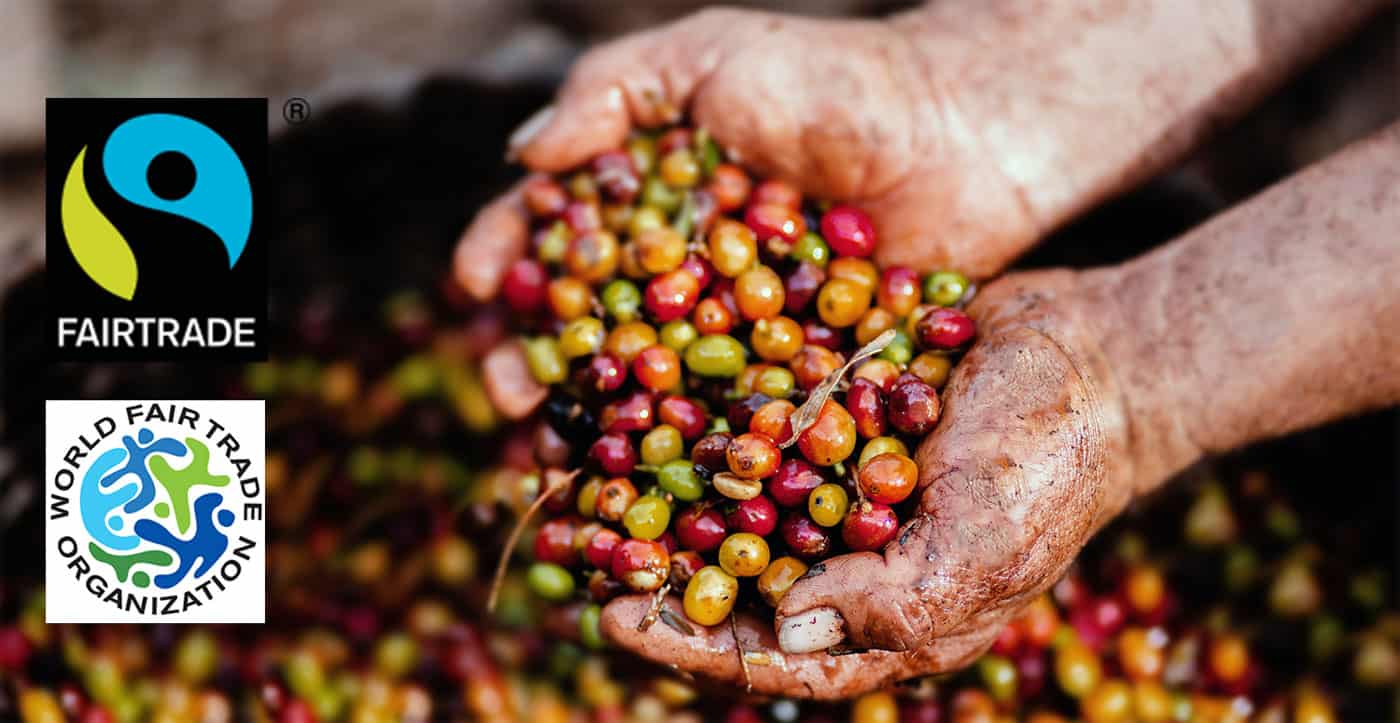

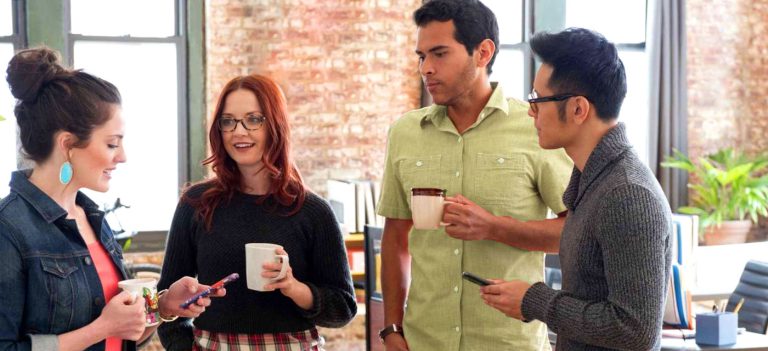
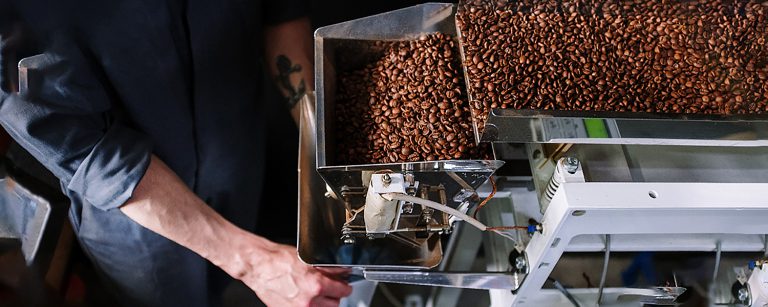
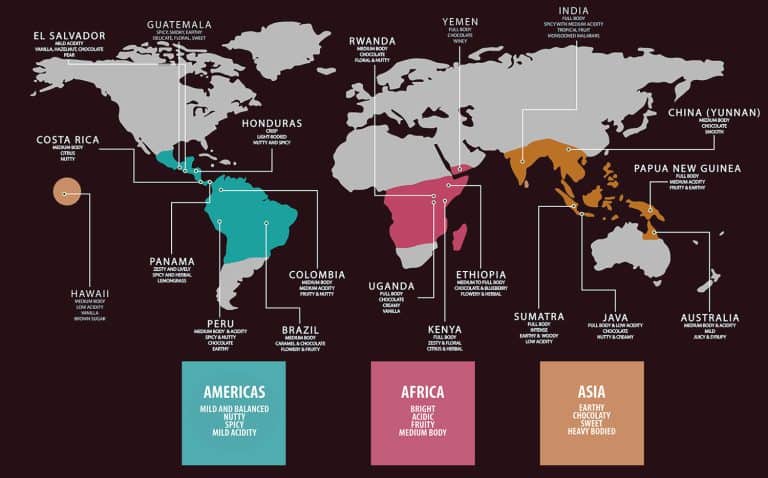
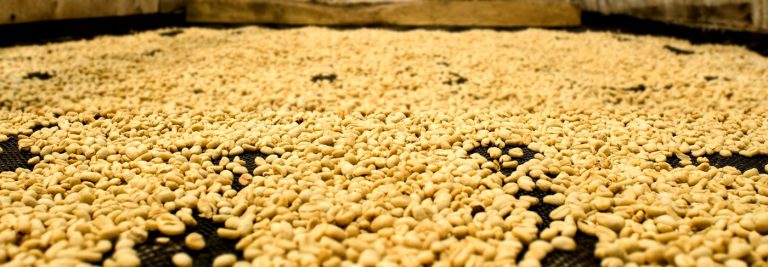

The statistics about Fairtrade’s impact, specifically the reduced carbon emissions and benefits to households, are quite compelling. As an environmental science teacher, I always stress the importance of eco-friendly practices to my students. This piece provides excellent reference material to further those discussions – cheers Tom.
Wow, the statistic on Fairtrade coffee farmers receiving services and training really caught my attention – 73% is a high number, indicating a significant effort in development and empowerment. Could you elaborate on the nature of these services and trainings? I’m considering writing a college paper on this topic and this could be a valuable starting point.
Hey Tom, I’ve always been an avid coffee drinker, but I admit, I hadn’t paid much attention to the origins of my morning cup until now. Reading through the facts in this article made me realize that my choices have more impact than I thought. I’m grateful for the enlightenment and look forward to supporting Fairtrade coffee from now on.
As someone who recently visited a coffee plantation in Peru, this article resonates with me deeply. Seeing firsthand the hard work that goes into every coffee bean makes your fact number 6 about 30% of Fairtrade coffee sold in the US coming from Peru incredibly powerful. I now make a conscious effort to check for Fairtrade certification on the products I buy.
This article sparked my curiosity, especially with fact number 17 about consumers being willing to pay more for eco-friendly coffee. Is there research showing that this sentiment translates to actual buyer behavior in the marketplace, or do lower prices still tend to win out?
Yes, I added a link to the sca article that has details on the research.
I need some clarification about the distinction between Fair Trade and Fairtrade. The article did explain the difference, but I’m wondering if there’s an easy way to spot this on packaging when I’m in a rush at the grocery store. Any advice from fellow readers would be appreciated.
Interesting read, especially the part about how the Fairtrade Premium is put to use. I work in sustainability, and I’m impressed by the 58% of Premium used for the UN’s Zero Hunger SDG. However, I’d argue that all SDGs are interconnected, and I would love to see future articles elaborate on how Fair Trade tackles educational or health-related goals.